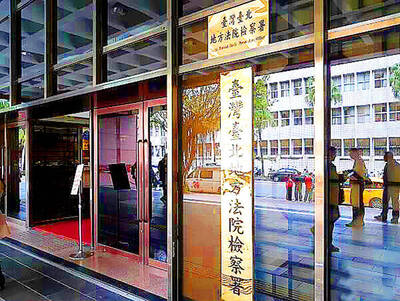The US could defend Taiwan from a Chinese military attack, but defeating a Chinese invasion force is likely to become increasingly difficult in coming years, a report from the RAND Corporation said.
“As long as the Chinese economy continues to grow faster than that of the US and Beijing continues to make military modernization a priority, the challenges facing US military planners in Asia will grow more severe over time,” the report said.
The 400-page report was released just one week before Chinese President Xi Jinping (習近平) is to arrive in the US for a state visit and a summit with US President Barack Obama, which might ensure that its contents are given close attention in Beijing.
In the case of a Chinese attack on Taiwan, US commanders would probably be unable to find the basing required for US forces “to prevail in a seven-day campaign,” said the report, titled The US-China Military Scorecard: Forces, Geography and the Evolving Balance of Power.
It predicts they would prevail in a longer campaign, but this would entail leaving ground and naval forces vulnerable to Chinese air operations.
The report said that given the size and technical sophistication of the US arsenal, together with the accumulated experience and resiliency of its military personnel and commanders, the US remains capable of fighting and winning a protracted air and naval battle against China.
The report examines what RAND analysts consider to be the two most likely war scenarios: an attack on Taiwan and occupation of the disputed Spratly Islands (Nansha Islands, 南沙群島).
“The Spratly Islands scenario would be easier, requiring roughly half the forces of the Taiwan scenario,” the report said.
An invasion could be brought about after a more assertive China moves to isolate Taiwan further on the world stage, inadvertently pushing Taipei toward de jure independence, the report said.
Chinese leaders would then decide to occupy the nation by force, prompting Taiwan to appeal for US help, the report said, adding that “given the ambiguous circumstances of conflict, Washington decides to use military force to protect the island.”
The scenario assumes that, as tensions mount, both sides prepare militarily.
The People’s Liberation Army (PLA) could deploy additional combat and support aircraft to the Nanjing Military Region, deploy its most advanced submarines and move forces out of garrison to forward staging areas.
The US might then react by moving additional aircraft and ships to the region and raise alert levels.
Politically, the scenario assumes that the US is allowed to operate freely from bases in Japan, the PLA is permitted to strike US bases in Japan and US forces are allowed to attack nonstrategic targets in China.
The report said little in detail about the role of Republic of China forces in defending Taiwan.
“Taiwanese ability to extend the duration of a contest has a substantial impact,” it said. “To the extent that Taiwan can prolong the duration of the conflict, US force requirements could be eased.”
“It is easier for the US to employ its air and naval power to influence events on the ground in a longer war than in a shorter one. The US should strongly encourage Taiwan to undertake defense reforms that will maximize its odds of avoiding quick defeat,” the report said.
According to the report, China would aim to disrupt US forward operating bases near the conflict zone, primarily through missile strikes, while attempting to sink US aircraft carriers or push back their areas of operation using submarines, missiles and air attacks.
The US would seek to gain air superiority through both air-to-air battles and by penetrating Chinese airspace to strike air defense targets and command-and-control facilities.
“The US would also seek to destroy Chinese surface assets, including forces dedicated to landing operations and surface action groups operating in an air defense or anti-submarine capacity,” the report said. “It would likely also undertake limited counter-space and cyber operations, especially if it were attacked first in those domains.”
“Neither side would look to use nuclear weapons at the start of hostilities, but the security of nuclear forces would weigh heavily on leaders’ minds during a conflict and under some circumstances pressures could build to cross the nuclear threshold,” it said.
According to the RAND analysts, for China to prevail in either the Taiwan or Spratlys scenarios, its offensive goals would require it to hold advantages in nearly all operational categories simultaneously.
“US defensive goals could be achieved by holding the advantage in only a few areas. Nevertheless, China’s improved performance could raise costs, lengthen the conflict and increase risks to the US,” the report said.
The report said that improved accuracy of Chinese ballistic missiles would force a large proportion of US aircraft to fly from bases susceptible to attack or farther from the conflict.
“Basing issues will pose greater challenges for US efforts to gain air superiority over the battlefield,” the report said.
The report said that while penetrating Chinese airspace has become more hazardous “especially in the high-threat environment opposite Taiwan,” the development of new generations of precision weapons gives the US “new options and greater punch.”
RAND analysts modeled attacks on the 40 Chinese air bases within unrefueled fighter range of Taiwan and the smaller number near the Spratlys and concluded the US could close them for two or three days in an initial attack.
US submarines could be expected to destroy almost 40 percent of Chinese amphibious shipping — tasked with landing troops on Taiwan during a seven-day campaign — “losses that would likely wreck havoc on the organizational integrity of a landing force,” the report said.
The report said China enjoys the advantage of proximity in most plausible conflict scenarios, and geographical advantage would likely neutralize many US military strengths, so US military leaders should ensure that US planning for Pacific military operations is “as dynamic as possible.”
“Western governments and commentators should make it clear to China that aggression would carry immense risks and that China should be cautious not to exaggerate its ability to prevail in armed conflict,” it said.

INVESTIGATION: The case is the latest instance of a DPP figure being implicated in an espionage network accused of allegedly leaking information to Chinese intelligence Democratic Progressive Party (DPP) member Ho Jen-chieh (何仁傑) was detained and held incommunicado yesterday on suspicion of spying for China during his tenure as assistant to then-minister of foreign affairs Joseph Wu (吳釗燮). The Taipei District Prosecutors’ Office said Ho was implicated during its investigation into alleged spying activities by former Presidential Office consultant Wu Shang-yu (吳尚雨). Prosecutors said there is reason to believe Ho breached the National Security Act (國家安全法) by leaking classified Ministry of Foreign Affairs information to Chinese intelligence. Following interrogation, prosecutors petitioned the Taipei District Court to detain Ho, citing concerns over potential collusion or tampering of evidence. The

‘FORM OF PROTEST’: The German Institute Taipei said it was ‘shocked’ to see Nazi symbolism used in connection with political aims as it condemned the incident Sung Chien-liang (宋建樑), who led efforts to recall Democratic Progressive Party (DPP) Legislator Lee Kun-cheng (李坤城), was released on bail of NT$80,000 yesterday amid an outcry over a Nazi armband he wore to questioning the night before. Sung arrived at the New Taipei City District Prosecutors’ Office for questioning in a recall petition forgery case on Tuesday night wearing a red armband bearing a swastika, carrying a copy of Adolf Hitler’s Mein Kampf and giving a Nazi salute. Sung left the building at 1:15am without the armband and apparently covering the book with a coat. This is a serious international scandal and Chinese

Seventy percent of middle and elementary schools now conduct English classes entirely in English, the Ministry of Education said, as it encourages schools nationwide to adopt this practice Minister of Education (MOE) Cheng Ying-yao (鄭英耀) is scheduled to present a report on the government’s bilingual education policy to the Legislative Yuan’s Education and Culture Committee today. The report would outline strategies aimed at expanding access to education, reducing regional disparities and improving talent cultivation. Implementation of bilingual education policies has varied across local governments, occasionally drawing public criticism. For example, some schools have required teachers of non-English subjects to pass English proficiency

TRADE: The premier pledged safeguards on ‘Made in Taiwan’ labeling, anti-dumping measures and stricter export controls to strengthen its position in trade talks Products labeled “made in Taiwan” must be genuinely made in Taiwan, Premier Cho Jung-tai (卓榮泰) said yesterday, vowing to enforce strict safeguards against “origin laundering” and initiate anti-dumping investigations to prevent China dumping its products in Taiwan. Cho made the remarks in a discussion session with representatives from industries in Kaohsiung. In response to the US government’s recent announcement of “reciprocal” tariffs on its trading partners, President William Lai (賴清德) and Cho last week began a series of consultations with industry leaders nationwide to gather feedback and address concerns. Taiwanese and US officials held a videoconference on Friday evening to discuss the